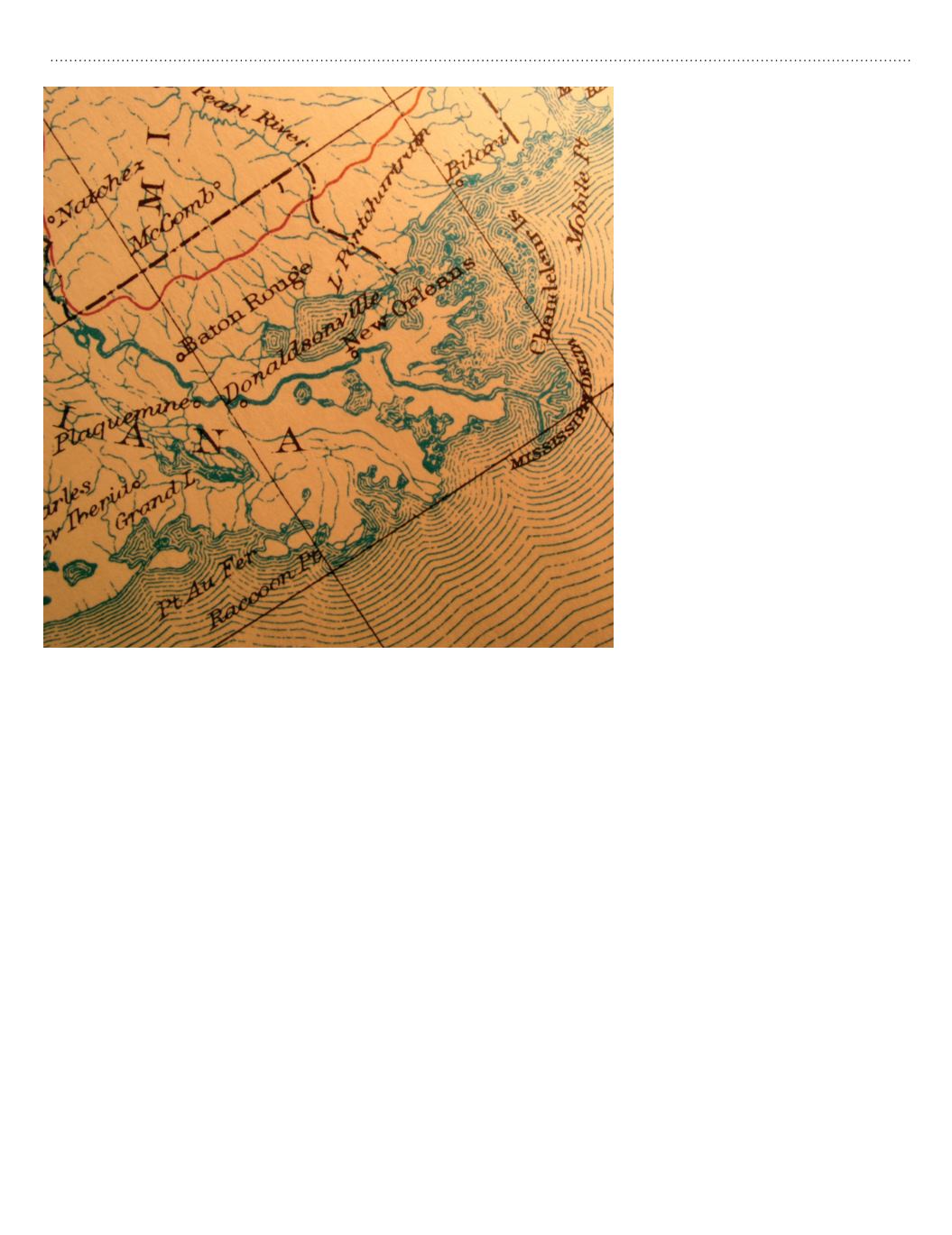

26
MY
ROUSES
EVERYDAY
MAY | JUNE 2015
the
Culinary Influences
issue
T
he Cajun and Creole cultures are quite distinct, and so are
their cuisines.The Creoles were the offspring born in New
Orleans of the European aristocrats, wooed by the Spanish
to establish New Orleans in the early 1690s. Second-born sons,
who could not own land or titles in their native countries, were
offered the opportunity to live and prosper in their family traditions
here in the NewWorld. It is believed the word Creole can be traced
to one of two origins. First, the old Spanish word “Criallo”meaning
a mixture of cultures or color such as in the word Crayola. Secondly,
from the Latin word “Creare” meaning to create as in creating a
new race. Although the first Creoles were documented in Mobile,
Alabama, in 1702, Natchitoches and New Orleans followed in
1714 and 1718 respectively.Today, the term Creole in New Orleans
represents the native born children of the intermarriage of the
early cultures settling the city. These include the Native American,
French, Spanish, English, African, German and Italian and further
defines the cuisine that came from this intermarriage.
The influences of classical and regional French, Spanish, German
and Italian cooking are readily apparent in Creole cuisine. The
terminologies, precepts, sauces and major dishes were carried
over, some with more evolution than others, and provided a solid
foundation for Creole cooking.
Bouillabaisse is a soup that came from the Provence region of
France in and around Marseilles.This dish is integral to the history
of Creole food because of the part it played in the creation of gumbo.
The Spanish, who actually played host to
this new adventure, gave Creole food its
spice, many great cooks and paella, which
was the forefather of Louisiana’s jambalaya.
Paella is the internationally famous Spanish
rice dish made with vegetables, meats and
sausages. On the coastline, seafoods were
often substituted for meats. Jambalaya has
variations as well, according to the local
ingredients available at different times of
the year.
The Germans who arrived in Louisiana
in 1725 were knowledgeable in all forms
of charcuterie and helped establish the
boucherie and fine sausage making in South
Louisiana. They brought with them not
only pigs but chicken and cattle as well. A
good steady supply of milk and butter was
seldom available in south Louisiana prior to
the arrival of the Germans.
The Italians were famous for their culinary
talents. They were summoned to France by
Catherine deMedici to teach their pastry and
ice cream making skills to other Europeans.
Many Creole dishes reflect the Italian
influence and their love of good cooking.
From the West Indies and the smoke
pots of Haiti came exotic vegetables and
cooking methods. Braising, a slow-cooking
technique, contributed to the development
of our gumbos. Mirlitons, sauce piquantes
and the use of tomato rounded out the emerging Creole cuisine.
Native Indians, the Choctaws, Chetimaches and Houmas,
befriended the new settlers and introduced them to local produce,
wildlife and cooking methods. New ingredients, such as corn,
ground sassafras leaves or filé powder and bay leaves from the laurel
tree all contributed to the culinary melting pot.
I would be remiss if I failed to mention the tremendous influence
of “the black hand in the pot” in Creole cooking. The Africans
brought with them the “kin gumbo” or okra plant from their native
soil which not only gave name to our premier soup but introduced a
new vegetable to South Louisiana. Even more importantly, African
Americans have maintained a significant role in development of
Creole cuisine in the home as well as the professional kitchen.
Creole cuisine is indebted to many unique people and diverse
cultures who were willing to contribute and share their cooking
styles, ingredients and talent.
Obviously, Creole cuisine represents the history of sharing in South
Louisiana. Early on in the history of New Orleans, the Creole
wives became frustrated, not being able to duplicate their old world
dishes with new world products. Governor Bienville helped to solve
this problem by commissioning his housekeeper,Madame Langlois,
to introduce them to local vegetables, meats and seafoods in what
became the first cooking school in America.This school aided them
Cajun
&
Creole
by
Chef John Folse,
The Encyclopedia of Cajun & Creole Cuisine















